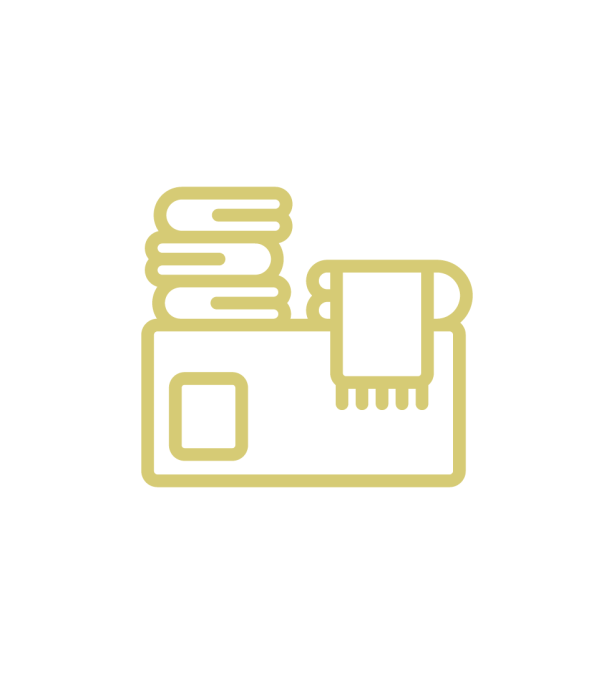Total Value Locked Explained: Why TVL matters in DeFi
By constituting the figure of TVL with the market cap, we can know whether a protocol’s native coin is undervalued or overvalued. A token is considered overvalued/undervalued if the project’s market cap is high/low relative to its TVL. The TVL of the DeFi market or a DeFi protocol constantly changes when investors deposit or withdraw funds into the DeFi projects. TVL also fluctuates in line with the changing value of the fiat currency, usually the US dollar and denominated in the project’s native token. As such, if the fiat currency or the project’s native token increases in value, so does the protocol’s TVL and vice versa.
Founded in 1993, The Motley Fool is a financial services company dedicated to making the world smarter, happier, and richer. The Motley Fool reaches millions of people every month through our premium investing solutions, free guidance and market analysis on Fool.com, top-rated podcasts, and non-profit The Motley Fool Foundation. For example, DefiLlama said Aave had $5.4 billion total value locked on Oct. 24, 2023. Looking at the breakdown of those total assets, Ethereum was listed as the largest, at about $4.6 billion. The Polygon and Avalanche blockchains are the next two largest, at about $287 million and $193 million, respectively. According to Defipulse, the current total value locked in DeFi protocols is $40.67 billion, down from $67.258 billion in May 2022.
Synthetix traders can then earn fees from the platform when their minted assets are traded or redeemed back to SNX for a fee. TVL is now used to power DeFi indexes that calculate their weights based on the TVL in the project’s smart contracts. The value is also spread across over 40 applications; the most value locked in a single application only consists of a 22% how to buy xrp on poloniex dominance of the supply. TVL essentially represents the total value of all the crypto assets that are locked into a protocol’s smart contracts. After all, the market cap value depends on the price of the native token multiplied by its total circulating supply. Its value is typically influenced by social media hype, exchange listing, new protocol upgrades, etc.
- For people who wish to lend their crypto tokens, TVL is a great way to gauge activity in a protocol.
- In terms of slippage, lower TVL means there is more risk of getting an unexpectedly worse price, especially for larger trades.
- The TVL in DeFi gives investors a glimpse of how the space is performing in the crypto markets.
- Locking is generally done by staking tokens on a blockchain, which also serves to give the token staker the ability to earn fees by validating transactions.
- Cosmos developer All in Bits (AiB) is causing a stir in the blockchain realm by unveiling GovGen, a novel network focused on governance, ahead of the contentious AtomOne…
Each category may implement a slight variation on how TVL is calculated, from either “deposited” assets for lending protocols to “minted” assets for tokenization protocols. The smart contract is programmed to fulfil the user’s request provided specific conditions are met (for example, they have enough funds in their portfolio to cover the transaction). So they allow DeFi protocols like rhino.fi to provide financial services without the need for an old-fashioned intermediary. Market cap refers to the total value of the protocol’s token and is calculated by multiplying the total number of tokens by its current market price, usually in USD. It can be used as an indicator of the market value of the DeFi protocol.
Lending platforms will aim to attract investors by offering an attractive APR yield, and any digital assets locked on the network to earn that yield will boost the network’s TVL figure. Locking is generally done by staking tokens on a blockchain, which also serves to give the token staker the ability to earn fees by validating transactions. The concept is particularly relevant for projects that host automated market makers, a form of trading which enables traders to buy from and sell into pre-filled liquidity pools. The more liquidity in these pools, the greater stability in their valuations. If it holds more funds, it has deeper liquidity that can efficiently serve more customers. Because users themselves are liquidity providers in decentralized finance, this is critical for robust markets.
Lending is the most popular use case found in the Ethereum DeFi ecosystem. This process allows depositors to lend their valuable assets — such as ETH, WBTC, or LINK — to borrowers, who then collateralize the loans with their own locked assets. DeFi Pulse popularized the metric during the 2019 bear market when there weren’t quite as many eyes fixated on DeFi as there are today. During this period, there was less than $400M locked, and more than 90% of that was concentrated in a single application — MakerDAO. Today, there is over $10.4B of TVL located within the Ethereum DeFi ecosystem. Alongside mcap/TVL ratio, another factor that can skew TVL as a value indicator is whale activity.
How Total Value Locked (TVL) Is Calculated
The DeFi boom from 2020 to 2022 happened because the finance platforms used their decentralized nature to offer large annual percentage rate (APR) interest rate yields for staking and lending. This also happened at a time when global central banks were pursuing a collective monetary policy that relied on interest rates near zero to spur growth. Payment protocols have yet to become a centerpiece of the DeFi ecosystem. Currently, payment protocols are Layer 2 solutions that allow users to exchange transactions at a faster rate for a cheaper price. Uniswap is the leader in this category and the winner out of all DeFi protocols, holding over $2.35B in locked assets. Uniswaps liquidity for ETH, WBTC, and FYI is even deeper than that of centralized exchange giants like Binance and Huobi.
MakerDAO is the leader in this category, presiding over $1.8B in locked assets that account for 2.39% of the total ETH in circulation and 14% of the total minted WBTC. Borrowers first deposit these assets in order to borrow the DAI stablecoin from the protocol. Total value locked measures the value of deposits and people’s interest in a certain dApp or blockchain network. Similarly, when people deposit more funds into one bank than the other, it indicates that one bank is more popular.
What Will Cause Impermax’s TVL To Go Up?
Despite this, the vast majority of the DeFi community is satisfied with the current DeFi Pulse solution, which counts each approved project’s collateral any time a user deposits it into a supported application. WBTC is the leader in this category, currently possessing over $1B in Bitcoin that has been tokenized on Ethereum. These tokenized Bitcoins are now used across both the lending and DEX protocols, securing them an essential spot in the DeFi ecosystem.
Stablecoins can be derived from “yield protocols” that allow depositors to receive an equal representation of their deposited tokens. Their products are tailored toward advanced traders who are already well served in centralized finance; additionally, the presence of Ethereum scaling roadblocks prevents better adoption. Derivatives allow asset deposits to power synthetic assets, futures contracts, and other options.
For instance, its utility matters as well, as tokens that don’t generate yield make the TVL metric almost useless. In conclusion, while being an imperfect way to measure protocol health, TVL is still a useful indicator for investors. Synthetix is the leader in the derivatives category, with over $592M in locked assets. Synthetix depositors “stake” (lock) the SNX tokens to create synthetic assets like USD, euros, gold, and Bitcoin.
How useful is TVL?
The largest cryptocurrencies and stablecoins by market capitalization usually will account for the majority of TVL, as these are the most trusted assets. Cryptocurrency arrived in 2009 with the creation of Bitcoin, which was designed to be a peer-to-peer currency using digital ledger technology that would operate outside of centralized control. Coin Culture is an independent media outlet that aims to provide an Aussie take on crypto, digital assets, and investing.
Relationship between Market Cap and TVL
In some cases, TVL may not donate the actual valuation of a DeFi project. Some DeFi projects may have large investors, i.e., whales, who can sway the TVL of the project with a single withdrawal or deposit. In some cases, the whales may be incentivized to hype a DeFi protocol by making significant investments and sending positive signals to woo potential investors. In such cases, the TVL may fail to portray the actual state of the project. The first step in calculating the TVL of a particular DeFi project is establishing its market cap. You can do this by multiplying the project’s token supply by the current price, usually in US Dollars.
While TVL is defined as the total value of cryptocurrency that is locked in a smart contract, it actually requires more nuanced view to understand fully. When considering TVL as an indicator, the use case of the platform can you stake ada on binance us in question matters. TVL can be seen as a metric for the popularity of a dApp when directly comparing two with similar functions. TVL can also be seen as a proxy for slippage in the case of a DEX such as Uniswap.
The TVL is then calculated by dividing the market cap by the maximum circulating supply. The TVL of an individual DeFi project represents all the funds present in the protocol in terms of lending, borrowing, and transactional capacities. The overall TVL of the DeFi space is generally the summation of all the TVL across various DeFi protocols. Sentimentally, TVL can measure investors’ faith in a particular DeFi protocol. In the simplest terms, when the TVL of a DeFi application is rising, it is gaining liquidity, popularity, and/or usability.
With that said, this market cap/TVL ratio is dynamic, as we can see from Uniswap’s example. The perpetrator of the attack on KyberSwap, a decentralised exchange (DEX), has been observed transferring significant amounts of stolen how to sell a bitcoin funds across different blockchains. TVL, in contrast, allows us to accurately assess the amount of interest in a protocol at any given time. For this reason, it is useful to note the protocol/blockchain’s overall user number.
















